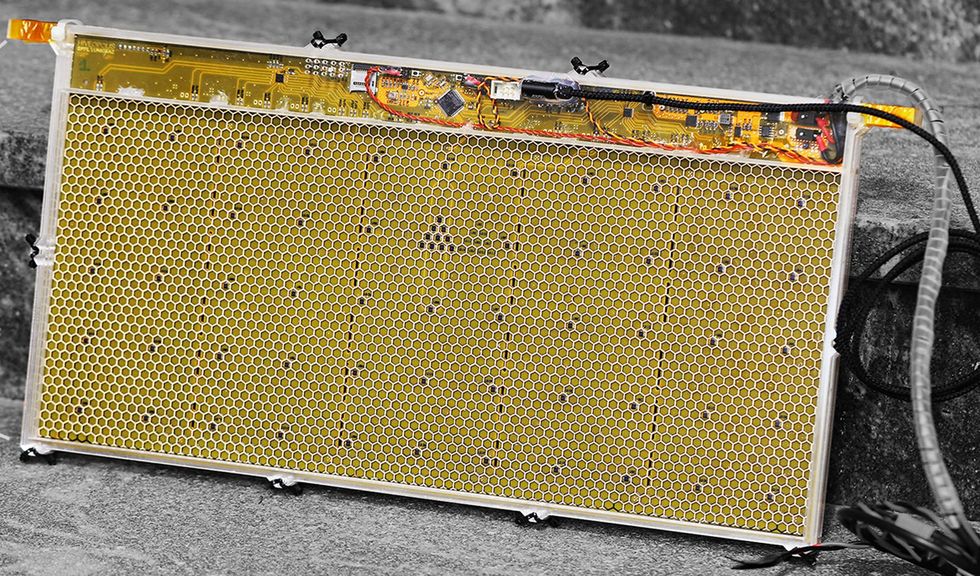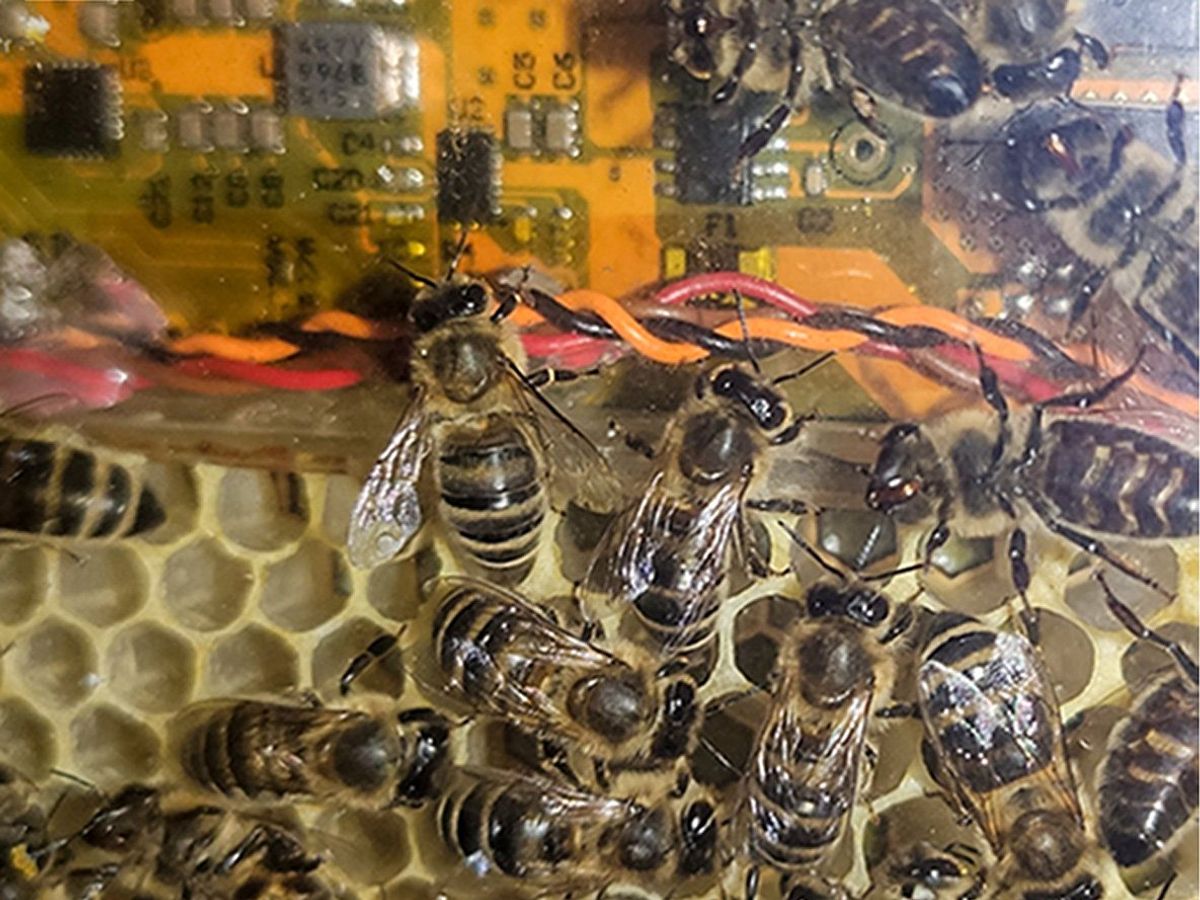Interactive robotics is a relatively new field of study, but in a short time it has moved on from just performing preprogrammed repetitive tasks to more complex activities, including interactions with living creatures. Biocompatible and biomimetic robots, for example, are being increasingly used to study animals and plants.
Animal-in-the-loop robotic systems are especially effective for studying collective behaviors that are otherwise challenging with traditional methods. Not only do these systems provide new insights for animal behavior and conservation studies. They also push innovation in robotics engineering. A recent collaboration between the Swiss École Polytechnique Fédérale de Lausanne (EPFL) and University of Graz in Austria demonstrated how effective animal-in-the-loop systems can be, when they developed a robotic system camouflaged as a honeycomb sheet and integrated it into a honeybee colony.
With the robotic system, the researchers studied three colonies of European honeybee (Apis mellifera) nonintrusively during the winter months of 2020 and 2021. The researchers were able to study collective thermoregulation behaviors in the colony, influence bee movement within the hive by modulating temperatures, and notice new patterns of movement. The group published their findings in March in Science Robotics.
“Basically, our device is a strange robotic system that not only is biocompatible, but also, it has a bunch of sensors, electronics, [and] thermal actuators to interact with honeybee colonies,” says Rafael Barmak, a doctoral student at EPFL and one of the authors of the study. Honeybees are notoriously territorial and will either destroy or cover up any foreign body in a hive. Therefore, while designing their system, the engineers had to account for not just the robotic functionalities required, but also the social behaviors of honeybees.

Using robots to study animals, Barmak says, means that tedious, repetitive tasks can be automated, like measuring localized temperatures, which is very important for a healthy hive and the bee life cycle. “Measuring temperature is not simple inside a honeybee colony…. What is cool about this device is that once it is well integrated in the colony, the bees surround the sensors [embedded in it].” Otherwise, beekeepers and scientists mostly have to rely on external temperature data, which isn’t always accurate.
It took a few iterations for the EPFL–University of Graz team to get the design right. The final robotic device looks like a beekeeping frame with an electronics panel across the top. “In the very middle, there is a printed circuit board [PCB], where we have the thermal actuators, the sensors, all the supporting electronics to make all this work,” Barmak says. “We have a microcontroller, which is a processor to orchestrate all the [workings].” The bees didn’t take to the first design, just the PCB, coated with a resin, and covered with wax. After that, the researchers decided to add a building template frame, and, after trying a few different materials, eventually won the colony over with a 1-millimeter-thick laser-cut mesh.
The system’s sensor arrays were even able to detect the impending thermal collapse of a colony. This happens when the temperature falls dangerously low (below 10 ºC for the European honeybee, at which point the bees are unable to beat their wings to generate heat). “We saw that the bees had stopped moving, and then we looked at the thermal data…and realized they were in trouble,” Barmak says. The researchers decided to use the thermal actuators, so far being used to study collective behaviors in the colony, to turn up the heat, and thus, the bees were saved.
Barmak and his team also used thermal stimuli to move the bees around within the colony, something that has not been tried before with winter colonies. They noticed that the bees followed thermal stimuli very precisely, and observed previously unknown behavior patterns, which could be useful to develop other apiculture technologies. They are now preparing their robotic system to study summer colonies, which will be a little more difficult as the bees are far more active then.
The most important thing about this robotic system, Barmak says, is that it allows scientists to study these animals in newer ways and expand on available knowledge. Aside from scientific curiosity, he says, it shows the possibilities of using interactive robotic systems to observe animal colonies, and then use the data to create new e-agriculture devices, sensors, and more for the field.
Payal Dhar (she/they) is a freelance journalist on science, technology, and society. They write about AI, cybersecurity, surveillance, space, online communities, games, and any shiny new technology that catches their eye. You can find and DM Payal on Twitter (@payaldhar).



